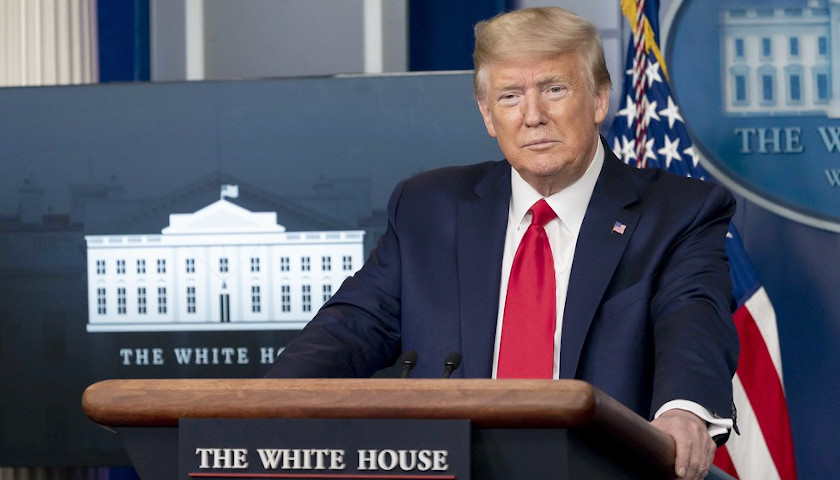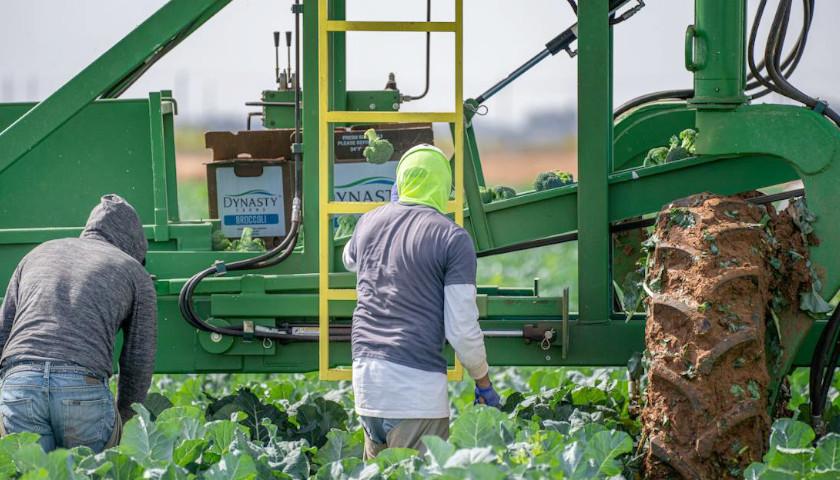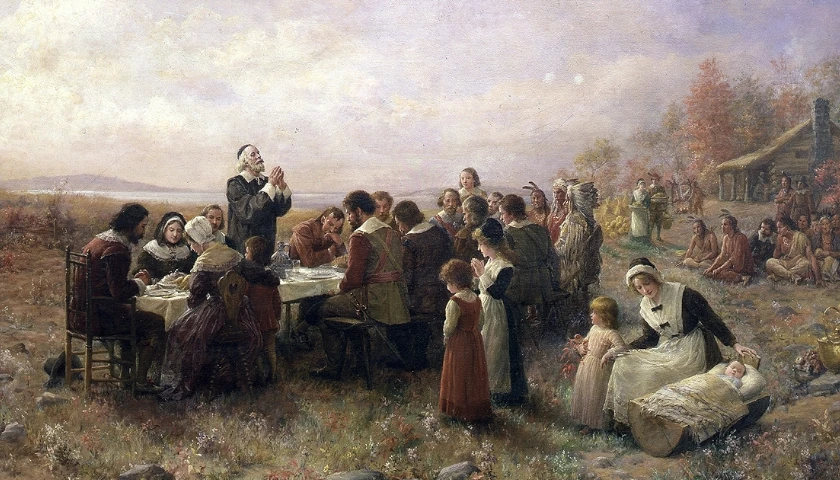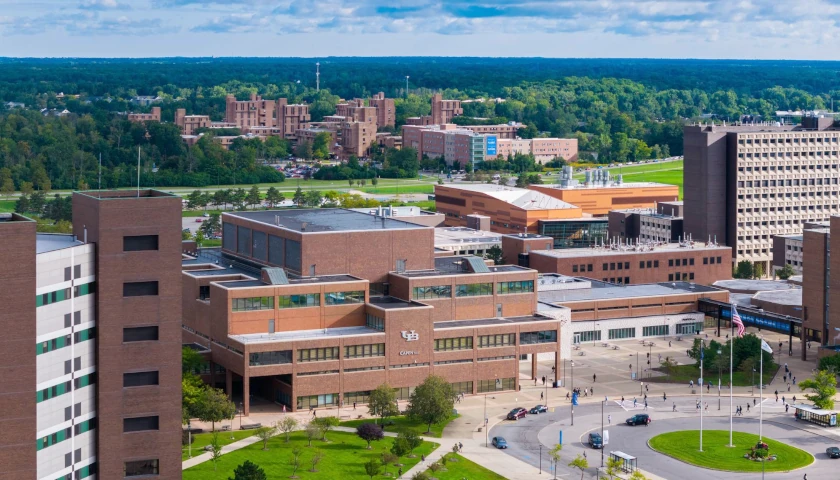by Robert Romano
At some point early in the Chinese coronavirus pandemic, President Donald Trump had a choice to make. While Congress was hopelessly distracted with impeachment mania, the first case had arrived in the U.S. on Jan. 15 in Washington state from Wuhan, China, and would not be identified until Jan. 20. That was just three days after the second death had been reported from Wuhan on Jan. 17.
The same day, on Jan. 20, was when China finally confirmed human-to-human transmission, more than a month after the outbreak began. At that point, high mortality rates were not yet on the radar. But on Jan. 24, China would lock down Wuhan and the surrounding region. A day later, on Jan. 25, the first doctor to treat the virus and who tried to warn the world about it died from it in China, raising international awareness.
That was the seminal moment that told both the public and world leaders two very important things: 1) this virus is much worse than was realized; and 2) that was because China was lying about it.
On Jan. 28, Hong Kong closed its border with China. On Jan. 29 the New England Journal of Medicine reported that the virus was likely spreading in Wuhan at least since mid-December. At that point, many airlines were already suspending flights to China. So what did Trump do?
On Jan. 29, the President appointed the White House coronavirus task force. The State Department was already evacuating people from Wuhan. At that point only a few hundred people had died in China. On Jan. 31, he suspended all travel from China, and Health and Human Services Secretary Alex Azar declared a public health emergency. Any U.S. citizen returning from China was to be subjected to a mandatory quarantine.
Now we know those early calls were critical and bought America time, enough time to get ready for the worst of the storm that we are now in. It would not be until Feb. 11 that the worldwide death toll would surpass 1,000. Not until Feb. 21 that Italy would report its first death as its own national lockdown would begin. Iran and South Korea were starting to have bigger problems, too.
On Feb. 26, Vice President Mike Pence was named the head of the task force.
By Feb. 29, Washington state had declared a state of emergency as the U.S. reported its first death in the same state, and the nursing home outbreak began. Travel from Iran was suspended. By then, markets were in a free fall.
The next two weeks would see states declaring states of emergency as the panic about testing began. On March 11, travel from Europe was suspended. By March 13, President Trump had declared a national emergency and joined the coronavirus task force press briefing to announce the administration’s joint effort with the private sector for drive-thru testing for the virus, calming public fears. States followed in short order with cancelling schools, with the stay at home orders coming thereafter. Additionally, the emergency declaration paved the way to waiving Food and Drug Administration (FDA) restrictions — over FDA scientists’ objections — on antiviral treatments and other therapeutics.
On the antivirals and other therapeutics, what President Trump did there was truly important, because we’re still about a year away from a vaccine with a whole other cold and flu season that will start in the fall. We really need something, anything, that might prevent the virus from spreading in our bodies or lessen the severity of infection. We’re not going to stay inside for another year. President Trump seems convinced hydroxychloroquine with zinc might be that answer. Who knows? Maybe we’ll all be eating supplemental hydroxychloroquine-zinc tablets or something like it in the fall. Or perhaps it will be one of the other antiviral treatments that Trump’s deregulation of the FDA made possible. We need something.
At every turn, President Trump has chosen life, even sacrificing the health of the economy while having the foresight to work with Congress with leaders in both parties to put in place the $2.2 trillion economic rescue plan that can be increased to $6 trillion to help as many employers as possible including 30 million small businesses to keep payroll plus expanding unemployment benefits, all to encourage Americans to stay home while we wait out the pandemic. Undoubtedly Congress will need to do more when there are no new cases and the economy begins to be reopened in stages.
Since that time, we are learning more about the projections on mortality, where the task force has warned that if nothing had been done, as many as 2.2 million Americans could have died, predominantly seniors. Since then, with mitigation, those projections were dropped, to 200,000, to 100,000, to 91,000, to 82,000 and now just 60,000, and it seems likely it will keep right on falling. That, even as the percentage rate of mortality has remained relatively consistent at about 3.5 percent of reported cases resulting in death.
That means everything the President and states have set in motion is working. The U.S. is winning the war.
Because of the unknown degree of asymptomatic transmission, the actual percentage rate for mortality is most certainly lower, but without a randomized large-scale test of the population for antibodies to see how far the virus has been, compared to the total deaths, there’s no way to know. I urged that those tests be conducted as soon as possible late last month.
But those tests are coming. For example, a few in Germany are already underway. And they’ll be done here, too, which should give the American people a really good idea soon how deadly the virus really is. I suspect it will confirm what we were being told all along, that it was far deadlier than the seasonal flu. Just my guess, I’d actually like to be wrong about that because then that would mean we could get back to our normal lives sooner rather than later.
Politically, though, it seems clear this is the path the American people preferred. They chose life, too, in spite of the economic turmoil we are all experiencing.
How this issue was brought to the table gives you an idea about how the politics of the virus have played out so far. The mainstream media, perhaps thinking it was doing Democrats a favor in the 2020 election, helped fuel public panic and mass hysteria over the coronavirus once the high death rates were reported overseas. Italy being put on lockdown was an eye-opener. The American people were told from panicked newscasters that millions of Americans would die if nothing was done. The public in turn demanded the government to act decisively. This effect was particularly pronounced among Democrats predisposed to disapprove of Trump, but also seniors who appeared to be the most vulnerable from dying.
That reporting helped set the agenda, and then primed the issue for how Trump would be evaluated, betting he would do the opposite of their proposed course.
In so doing, this created a political opportunity for the White House to respond not only to public concerns, but also dire warnings from public health officials about the high reported death rates. As the public came to learn, the White House was slightly ahead of the curve, insofar as travel restrictions had already been issued two days after the task force was named. And then the administration has been ramping up ever since. Now the press conferences are must see TV, watching the government response in action.
The President and the Vice President have led the task force, leaned on their advisors, coordinated with FEMA, the military and state governors, recruited the private sector for testing and cures, declared the national emergency and then states followed suit by closing up shop. The public settled down and now we’re all either working from home or newly laid off along with I count anywhere from 17 million to 20 million jobs lost and rising.
The effect? You’ve all seen the polls. But here’s the latest from Fox News, which usually oversamples Democrats, where President Trump is at his highest approval ever in their poll at 49 percent, including 13 percent of Clinton voters, 19 percent among blacks and 52 percent above age 45. His approval on handling the national emergency is 51 percent. The federal government’s approval is 56 percent. 57 percent say the country is on the right track with the virus. 70 percent say they’re still very concerned about the spread of the virus, 24 percent say somewhat concerned. 80 percent of blacks now say they are very concerned, more than any other group, undoubtedly owing to new data highlighted by the task force showing disproportionate deaths among African-Americans. State governments and governors get higher marks but that’s not surprising. Presidential approval is always going to be more divided along partisan grounds especially in an election year but you can spot the trend already in play. It’s still 7 months until the election but public attitudes are being set right now.
A CNBC poll shows much the same thing, even more pronounced, with Trump earning 20 percent approval among Democrats.
As an analyst, I am struck that anywhere from 17 to 20 million Americans have already lost their jobs, and yet they’re overwhelmingly approving of the policy that led to it. In these same polls, the American people are indeed worried about the economy, but right now they’re more worried about the virus. And until there’s a vaccine or something else that can help, I suspect that will remain the case.
In hindsight, the media might be thinking twice about the dire warnings of millions dying. We still don’t know what the representative sample serological tests are going to come out and say. But they’re coming soon. Again, it may be that we’ll find out the death rate was far, far lower than initially projected, which would be great news because then we could open everything up much faster, although my guess is it will still come in at about what was said, so about still 2 million or a little less than that if everyone had gotten sick, and plenty of studies showing in the wild it was highly contagious.
Mitigation seems to be working and so hopefully we’re down to no new cases in a month or so. I’m also are looking forward to learning about the effectiveness of the new treatments being used and how successful doctors were at saving lives.
But in a month or so, there’s no new cases, and then a few weeks later no new deaths, we’ll have an idea of what the death toll was, and what it could have been. At that point, the public will render a judgment.
Trump will easily be able to say at that point he helped saved hundreds of thousands or millions of lives, and a public that was demanding action, and overwhelmingly approving the national lockdown, will probably give him a good share of the credit for leading the country during this time. It’s a layup politically, and the RNC and Congressional Republicans will be running full steam in short order on that messaging. Trump will be making a big play for the African-American vote, too, which he was going to do anyway but now he’ll have additional credibility on the virus once the total dead is known and it’s far less than the worst case scenario that the public believed.
I tend to doubt Democrats will be able to successfully make a case the policy failed, and they will now find it difficult to shift to blaming the administration for the economy after making the case that the economy had to take a backseat, which it did. They got what they wanted. I say they should have been careful what they wished for.
A few weeks ago, I predicted we might see pronounced effects among seniors approving of the policy who were the most vulnerable and that has in fact turned up, here, and in other polls, like the Washington Post-ABC poll conducted mid-March. Trump’s elevated approval indicates he has also won over many Democrats by responding as aggressively as he did.
Now, I make no judgments about how the American people will respond over a longer term if states keep things closed for long while as the economy is still crashed. At some point, we will shift into a debate about how to reopen the economy and get the nation back on its feet. An open question is how quickly the economy gets reopened, and if we will be back to business as usual in the fall. I hope so. My thinking there is if the jobs numbers are pointed back in the right direction, that will certainly help the President in his reelection bid, but even if they’re not because everything’s still closed, again, I’m struck that the public so far has overwhelmingly preferred the recession option and has cooperated with the social distancing.
President Trump chose life, acted decisively and has led the country through this emergency — and the American people by and large have followed his leadership. And that’s a good thing.
– – –
Robert Romano is the Vice President of Public Policy at Americans for Limited Government.




